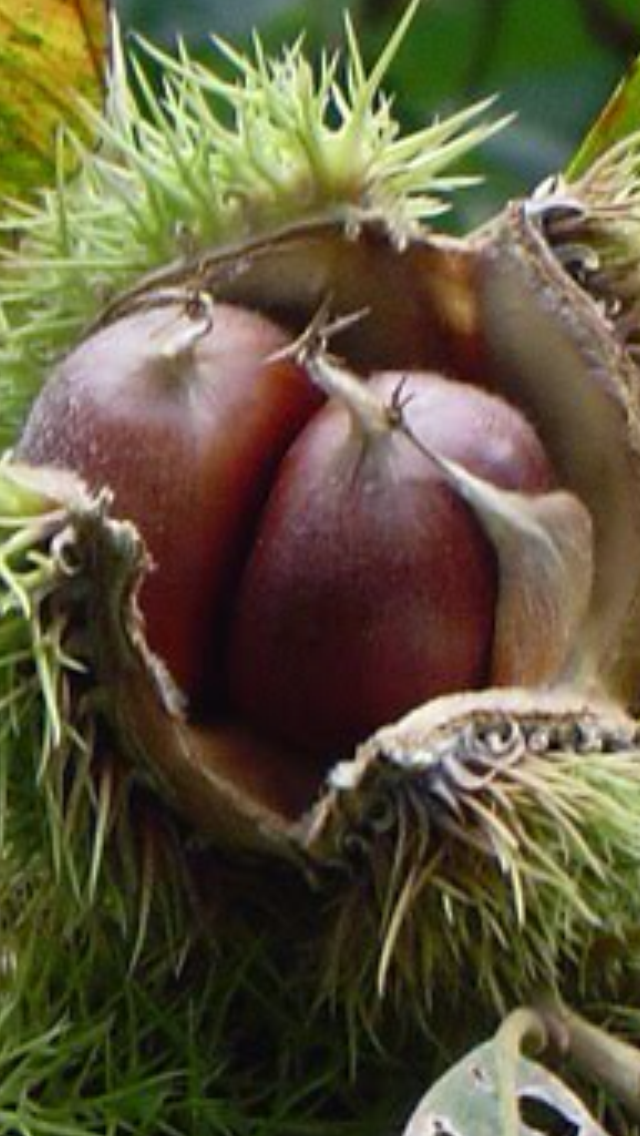The American Chestnut tree (Castanea dentata) was once one of the most common and important tree species in the Eastern United States. These trees were absolutely huge in some areas. It was common to see these trees reach over 10ft. in diameter and well over 100 feet tall.
This tree was referred to by many as the tree which took care of you from "the cradle to the grave". Meaning, when you were born you often would be placed in a cradle made from the wide Chestnut boards. Later in life, you would gather and eat the very nutritious nuts from the tree. The nuts also provided food for both people and wildlife. Squirrels, bear, turkey, deer and other animals depended greatly opon these nuts for food. In fact many families would gather and store these nuts to be eaten during the winter months, even gathering extra to help fatten hogs and feed other livestock. Many people built their homes and barns from the Chestnut tree logs and lumber, split shingles for the roof, split rails for fences and once your time on earth was finished your coffin would have more than likely been built from the wide boards of a Chestnut tree. Due to the large amount of tannic acid it was a very rot resistant lumber. It is easy to understand the meaning of the phrase "the tree that took care of you from the cradle to the grave".
At first one might think that these trees may have been driven into near extinction by over harvesting and the greed of man, but the American Chestnut was to suffer a much different fate which has almost completely wiped them out.
In 1904, a very unfortunate event happend. Japanese and Chinese Chestnut trees were imported into the United States to be planted at the Bronx Zoological Park in New York City. These trees were infected with a fungus which can be spread thru the air called (Cryphonectria parasitica) or the Chestnut blight.
This blight quickly spread thru the air to some of our native Chestnut trees which had no resistance to the fungus, and they quickly began to die off. From 1904 to around 1940, the blight had spread throughout the entire home range of the American Chestnut tree. Within only a few decades , the Chestnut blight had killed over 4 billion trees on more than 200 million acres of Eastern North America.
Very few of these trees remain, and of the ones that are found today, many of those are just sprouts off the actual root system of the huge tree that once stood in it's place.
But thankfully, there is still hope for these trees! There are many fighting to save this tree. Research has been discovered by backcrossing the American Chestnut with an Asian Chestnut that is blight-resistant, but still almost completely American, with all the qualities of the giant, majestic trees we saw a century ago maybe able to survive. Only time will tell if we can save the American Chestnut tree.






